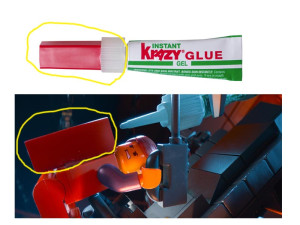 To make sense of postmodern architecture, we have to go back to the trenches in World War One. When World War One started, people were very optimistic. Europe had been in a politically tense state for a long time. When fighting broke out, the tension was released, and nations could go at each other! And even citizen were happy, hopefully that the war would be short and would make the world a better place. After 4 years of death and destruction on a scale never before imagined, the end of WWI marked a tremendous loss in faith in culture and civilization. We will talk more about that loss on Wednesday.
To make sense of postmodern architecture, we have to go back to the trenches in World War One. When World War One started, people were very optimistic. Europe had been in a politically tense state for a long time. When fighting broke out, the tension was released, and nations could go at each other! And even citizen were happy, hopefully that the war would be short and would make the world a better place. After 4 years of death and destruction on a scale never before imagined, the end of WWI marked a tremendous loss in faith in culture and civilization. We will talk more about that loss on Wednesday.
While some responded to the loss with absurd art, people like Mies van der Rohe wanted to make art, specifically buildings, that were not confused or mutilated or destroyed like the land and the cultures and the bodies of those who has survived the war. They wanted clean, clear, efficient machine-like buildings. The Seagram Building is just such a building. There is nothing deformed or disfigured about it. Furthermore, there is nothing extra or unnecessary. This style of architecture was so popular and so wide-spread that it was called International Style.
But International Style can be like the Attach of the Kragle. As you can see from this last sentence, I saw The Lego Movie over the weekend. If you have not seen it, STOP READING THIS AND GO SEE IT IMMEDIATELY. Okay, you don’t have to do that, but, in the movie, Krazy glue has an important function. The glue keeps everything in place, removes confusion, and keeps everything in order. Architects like Michael Graves, Charles Moore, and Frank Gehry reject the Kragle, or they reject the strict order and conformity of the International Style. Their buildings have extras and frills, they blend odd styles and textures, or they twist and dance.
What do you see in these buildings? What might make them funny or witty?

3 Comments
The first building known as the Seagram Building is very tall and extremely organized but ironically placed in a busy city where everything is purposely created to stand out. It was the architects purpose that the building be almost perfect at first glance using the most expensive materials.
The building known as the Piazza d’Italia was seen in my opinion as a statement piece. The Italia reference spurred attention the italian-Amercan community. A lot of architecture is put in place to initiate communication and even relationships between people and with their surroundings.
I was fortunate enough to see Frank Gehry’s “Dancing House” when I was in Prague, in January of last year. I recall our tour guide, mentioning in passing, that it had been very controversial among the city’s residents. Prague, like many cities in Europe, place great value on their aged beauty, and traditions of culture that make them unique. As an American, I thought all European cities were similar in this way, ironically enough. “Fred and Ginger”, as the building was once called more often, truly seem to be dancing with one another. I believe Ginger is on the left, and I visualize a long dress waving as she is guided by the leading, more stern guidance of Fred. “He” is much more rigid, and as men typically lead in formal dance (don’t hate me if I am wrong, and you are a dance major), I definitely think Fred is on the right. Although this part of the building seems more stable, it still leans, as if Fred is leading Ginger in their dance away from the other buildings, toward the river. I find the contrast between the strength and fortitude buildings usually embody, and the motion toward separation to be interesting. Gehry’s work really does stand out among surrounding buildings, and I believe it truly was meant to cause some debate among the people of Prague.
When I first looked at these postmodern buildings, I wasn’t a huge fan. It has a very 70’s look that I just do not like. One building that really caught my attention was the Vanna Venturi House that has a split gable. It is definitely a weird concept to just have the roof split right in the center. I think that this whole movement is funny in the fact that it isn’t really sure what it is. This type of architecture is modern with a traditional spin.
I really enjoyed looking at the Seagram Building. It is very clean and simplistic. It is not trying to be two things at one, and I appreciate that. I never would have thought to look at buildings as being funny or witty, but I can see it here. These buildings are their architects are trying to make a point with their different stylings.